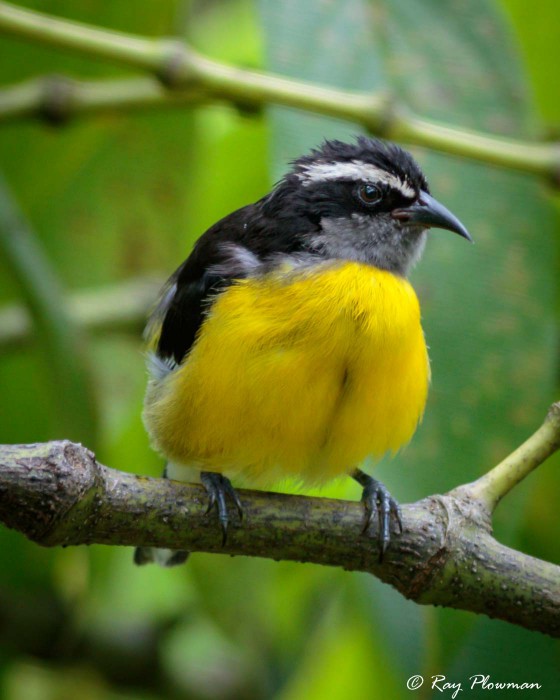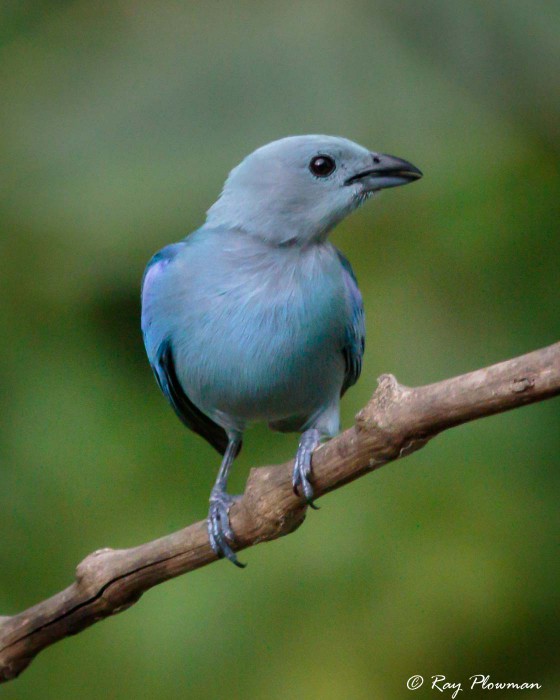Tanagers, Cardinals and Darwin's Finches
Featured in the first gallery are Tanagers (Thraupidae), and Cardinals (Cardinalidae) photographed in forest habitat. The second and third galleries display Darwin’s Finches (Dacninae, tribe Coerebini), which is part of Thraupidae family, see Taxonomy note below. Almost all tanagers have a diet of fruit and insects, cardinals’ food is much broader, and Darwin’s finches have a more specialised diet. The final gallery features tanager behaviours.
Tanagers and Cardinals
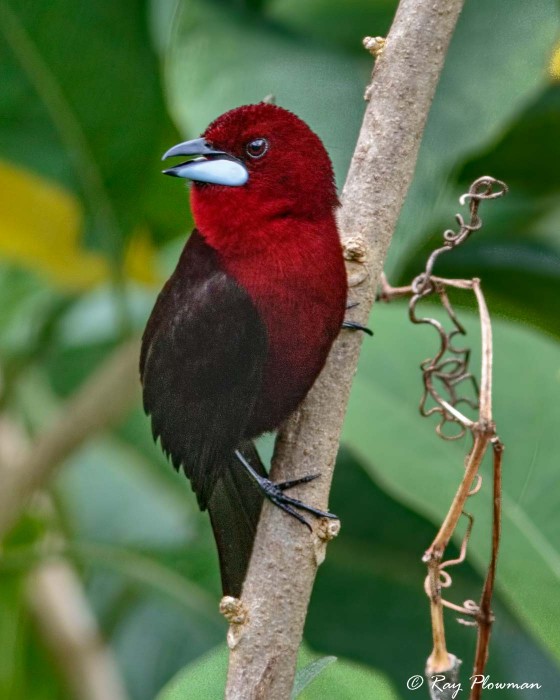
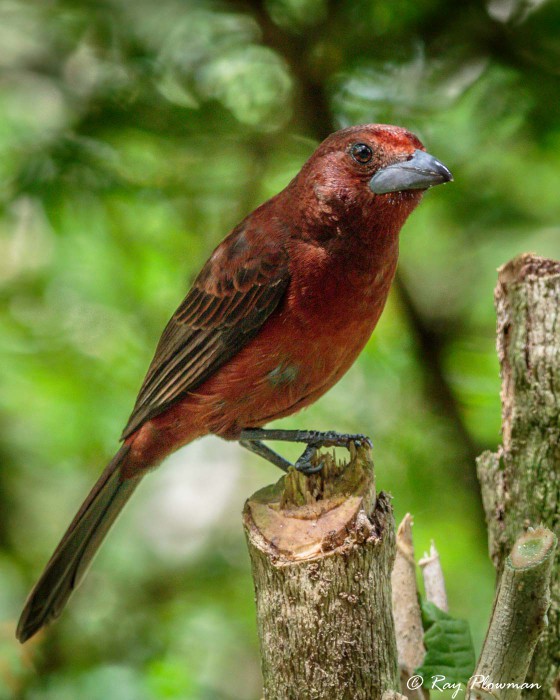
Tanager and Cardinal Notes
Images of showcased species are ‘Red List 2019’ assessed as ‘Least Concern’. The tanager and cardinal families populate much of the New World and are extensive with over 150 genera and 450 species between them. I photographed these species in Trinidad’s forests, lakes, mangrove swamps and nature parks. They are some of the most colourful and striking birds I’ve shot with some species exhibiting extreme plumage dimorphism. A good example is a Green Honeycreeper, named after the female; the male is blue.
Darwin's Cactus and Ground Finches
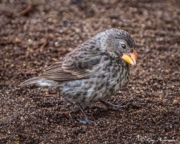
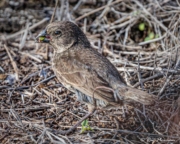
Darwin's Cactus and Ground Finch Notes
The species shown in the gallery are ‘Red List 2019’ assessed as ‘Least Concern’, except for the following two ‘Vulnerable’ species: Genovesa Cactus Finch and Espanola Cactus Finch. Darwin’s cactus and ground finches can sometimes be challenging to identify, see Identification of Darwin’s Finches below.
Cactus Finches: Santiago and Rabida islands are home to the nominate species of the common cactus finch (12-14cm), while subspecies intermedia inhabits most of the other islands except Genovesa and Espanola. Both these islands have endemic species: Genovesa Cactus Finch (13-15cm) and the Espanola Cactus Finch (13-15cm). The latter is sister to the large ground finch (15-16cm); the similarities are self-evident by comparing the two images. These finches rely on a diet that includes flowers, fruits, and seeds from the six species of prickly pear cacti (Opuntia) that grow in the Galapagos.
Ground Finches: Males are usually black; females tend to brown with stripped breasts. Ground finch’s primary food is seeds, which they crush with the bills; they also eat flowers, buds, leaves and occasionally insects. The light buff coloured Small Ground Finch I believe is a young female it was foraging with older females. For comparison the size of ground fiches is: large (15-16cm), medium (11-12cm) and small (10-10.5cm) ground finches.
Darwin's Arboreal Finches
Darwin’s Arboreal Finches
Except for the following three ‘Vulnerable’ species: Large Tree Finch, Green Warbler Finch, and Woodpecker Finch all other featured species are ‘Red List 2019’ assessed as ‘Least Concern’. Darwin’s tree finches can sometimes be challenging to identify, see Identification of Darwin’s Finches below.
Tree Finches: Generally, more plumage variation than ground finches. Males usually have blackish hood extending to throat and breast and underparts whitish with buffy tinge. Females are dull greyish-brown some streaking of underparts. The gallery displays large and small tree finches with several different colour variations. Diet is mainly arthropods, insects supplemented by vegetable matter such as fruits, leaves, buds, etc. Less difference in size than ground finches; small fiches are 11cm while medium and large are 13cm.
Vegetarian Finches are large at 16cm; have similar plumage to tree finches but with a pale or yellowish belly. As the name suggests, their diet is vegetable matter. One of Darwin’s more interesting finches is the Woodpecker Finch. I observed one individual foraging just like true woodpeckers; crawling along tree branches and clinging to tree trunks while searching for insects and larva. The Green Warbler Finch feeds on small insects and spiders. Its upper wing is brownish with variable underparts, usually white with warm buff on flanks and is the smallest finch at 10cm.
Tanager Behaviour
Tanager Behaviour Notes
Feeding and nest-building behaviours.
Identification of Darwin's Finches
Tree Finches: Generally, more plumage variation than ground finches. Males usually have blackish hood extending to throat and breast and underparts whitish with buffy tinge. Females are dull greyish-brown some streaking of underparts. The gallery displays large and small tree finches with several different colour variations. Diet is mainly arthropods, insects supplemented by vegetable matter such as fruits, leaves, buds, etc. Less difference in size than ground finches; small fiches are 11cm while medium and large are 13cm.
Vegetarian Finches are large at 16cm; have similar plumage to tree finches but with a pale or yellowish belly. As the name suggests, their diet is vegetable matter. One of Darwin’s more interesting finches is the Woodpecker Finch. I observed one individual foraging just like true woodpeckers; crawling along tree branches and clinging to tree trunks while searching for insects and larva. The Green Warbler Finch feeds on small insects and spiders. Its upper wing is brownish with variable underparts, usually white with warm buff on flanks and is the smallest finch at 10cm.
Tanagers and Cardinals Taxonomy
The simplified family tree figure depicts the taxonomy relevant to Tanagers and Cardinals photo album.
The Passerid Clade in placed in Core Passeroidea, J Boyd’s Taxonomy in Flux Checklist refers. The featured families contain the Nine-primaried Oscines Thraupid Group, which is part of the Icteroidae epifamily. These families include Thraupidae (Tanagers) and Cardinalidae (Cardinals). Epifamily is a rarely used taxonomic rank between family and superfamily. The following Nine-primaried Oscines.
Thraupidae (Tanagers) splits into subfamilies Thraupinae and Dacninae, further subdivided into eighteen tribes.
Taxonomy of Darwin's Finches
Darwin’s finches belong to tribe Coerebini (dome-nesting tanagers) in Dacninae subfamily. Most species are genera Geospiza but with the following exceptions: Platyspiza (Vegetarian Finch), Certhidea (Green Warbler Finch) and Camarhynchus (Tree Finches). Genera Camarhynchus is lumped with Geospiza by some authorities; I have followed this approach. Depending on taxonomy observed, there are between thirteen and eighteen recognised species in the Galapagos, twelve features in the galleries. All eleven species are Galapagos endemics, and the Common Cactus Finch (Geospiza scandens intermedia) and the Large Tree Finch (Geospiza psittacula psittacula) are subspecies endemics.
